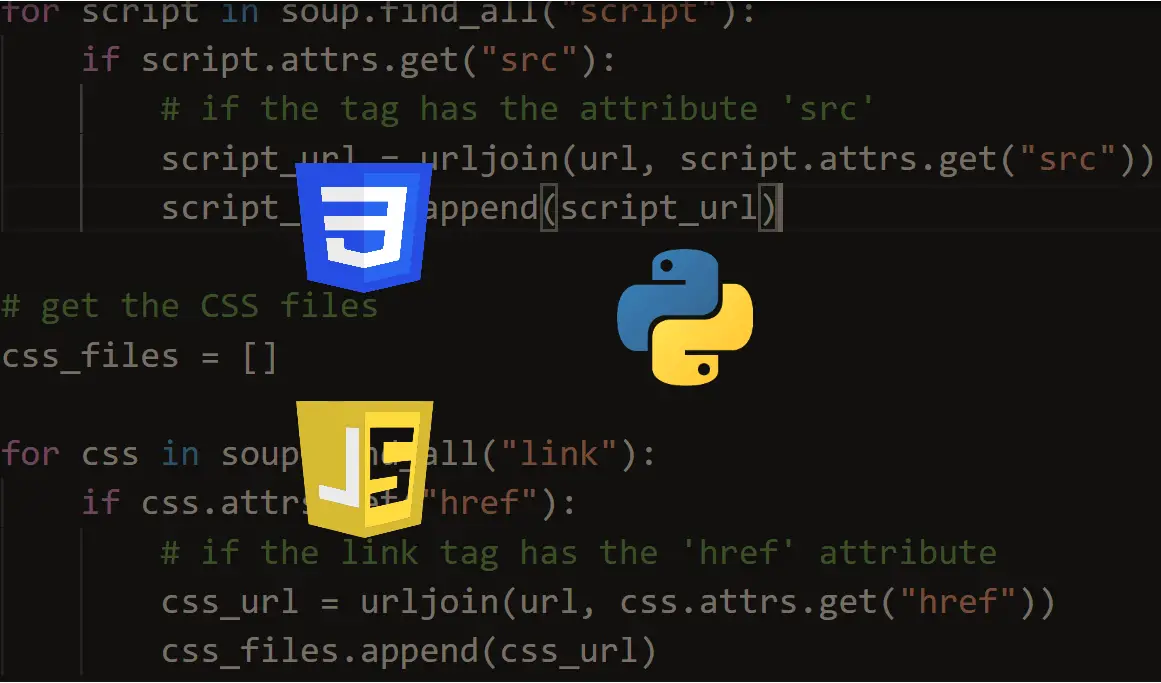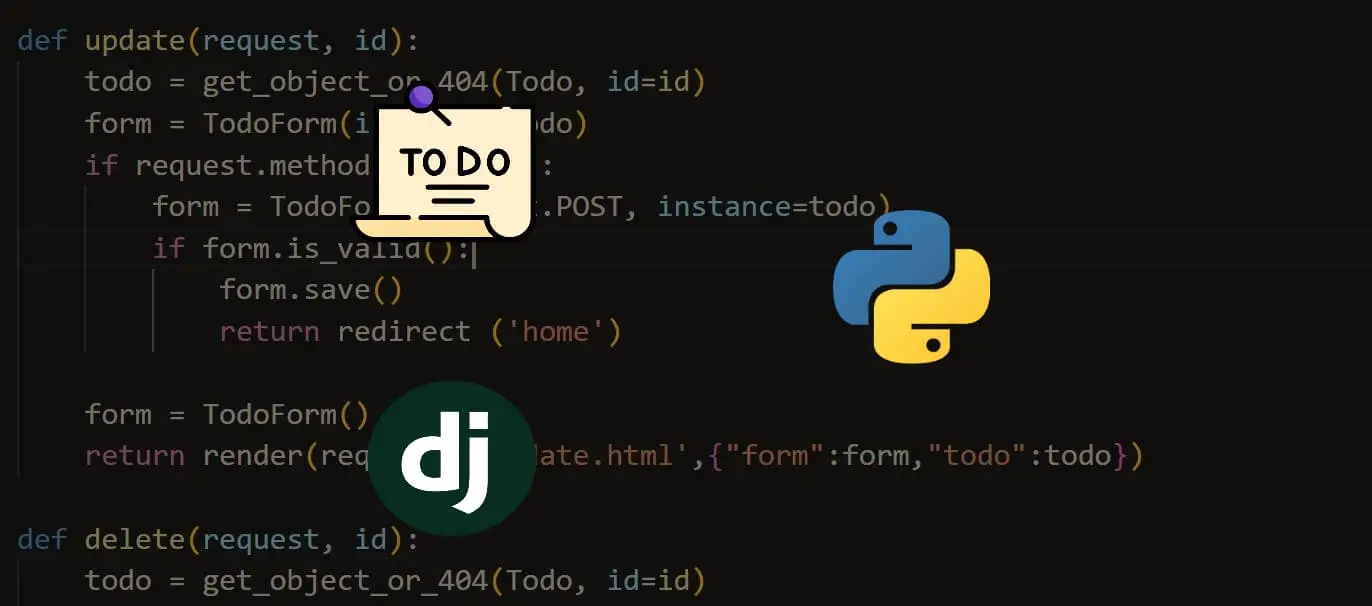Ready to take Python coding to a new level? Explore our Python Code Generator. The perfect tool to get your code up and running in no time. Start now!
In this article, we will make a Python program that will search for classes used in all HTML files in a project and then search and compile these files from the CSS files. The program will serve a specific purpose as it will match classes strictly; which means bg-black won't bg-black:hover, the used classes have to appear in the stylesheets as they are used.
This way of minimizing is useful for utility classes such as width-800px or color-grey-800 that only change on the property. Now maybe your utility classes also entail something like this pattern: child-margin-2rem which in the stylesheet is actually child-margin-2rem > *, this won't match by default, but we will make it possible to replace such patterns with the appropriate selector.
Finally, you can change the code, so the minified works better for your case, or you could even redo it on your own with the knowledge gained.
We will utilize a CSS Library called CSSUtils that allows us to parse, read and write CSS.
Imports
Let's start with the modules and libraries we have to import for our little program. The most important will be cssutils which has to be downloaded with pip install cssutils. We also want to import re, os, time. We get the logging module simply to turn off logging because cssutils throws a lot of errors. We then clear the console with os.system("cls") and save the program's start time to a variable.
import cssutils
import re
import logging
import os
import time
cssutils.log.setLevel(logging.CRITICAL)
startTime = time.time()
os.system('cls')Getting the Files
Firstly we get lists of files ending in .html and .css. We save these lists for later.
htmlFiles = getFilesByExtension('.html', '.')
cssFiles = getFilesByExtension('.css', 'style')Let's also go over the function that searches for all these files. Keep in mind it has to be defined before its usage. Here we use the os.walk() that receives a path and return data about each subdirectory and the directory itself.
We only need the files, which are the third item of the returned tuple. We loop over these, and if they end with the specified extension, we add them to the foundFiles list. Lastly, we also need to return this list:
def getFilesByExtension(ext, root):
foundFiles = []
for root, directories, files in os.walk(root):
for f in files:
if f.endswith(ext):
# os.path.join(root, f) is the full path to the file
foundFiles.append(os.path.join(root, f))
return foundFilesFinding all Used Classes
Next up, we want to find all the used classes in all the HTML files. To do this, we first create a dictionary to store each class name as an item, so we don't have duplicates in the end.
We then loop over all HTML files, and for each one, we get the content using a regular expression to find all class strings.
Continuing, we split each of these found strings because classes are separated by a space. Lastly, we return the keys of found list dictionary, which are the classes.
usedClasses = findAllCSSClasses()
def findAllCSSClasses():
usedClasses = {}
# Find all used classes
for htmlFile in htmlFiles:
with open(htmlFile, 'r') as f:
htmlContent = f.read()
regex = r'class="(.*?)"'
# re.DOTALL is needed to match newlines
matched = re.finditer(regex, htmlContent, re.MULTILINE | re.DOTALL)
# matched is a list of re.Match objects
for i in matched:
for className in i.groups()[0].split(' '): # i.groups()[0] is the first group in the regex
usedClasses[className] = ''
return list(usedClasses.keys())Translating used Classes
Now we translate some classes; this is useful if the class name won't exactly match the selector, but it follows a pattern like all classes starting with child- have > * appended to their selector, and here we handle this. We define each translation in a list where the first item is the regex and the second is the replacement:
# Use Translations if the class names in the Markup don't exactly
# match the CSS Selector ( Except for the dot at the beginning. )
translations = [
[
'@',
'\\@'
],
[
r"(.*?):(.*)",
r"\g<1>\\:\g<2>:\g<1>",
],
[
r"child(.*)",
"child\\g<1> > *",
],
]
usedClasses = translateUsedClasses(usedClasses)In the function, we then loop over each regex for each class so every translation is potentially applied to each class name. We then simply apply the replacement with the re.sub() method.
def translateUsedClasses(classList):
for i, usedClass in enumerate(classList):
for translation in translations:
# If the class is found in the translations list, replace it
regex = translation[0]
subst = translation[1]
if re.search(regex, usedClass):
# re.sub() replaces the regex with the subst
result = re.sub(regex, subst, usedClass, 1, re.MULTILINE) # 1 is the max number of replacements
# Replace the class in the list
classList[i] = result
return classListGetting Used Classes from the Stylesheets
After that, we get the style definition from the stylesheets with cssutils. Before we loop over the found style sheets, we first define the path of the minified CSS, which in this case is min.css, we also create a variable called newCSS that will hold the new CSS content.
output = 'min.css'
newCSS = ''We continue by looping over all CSS files. We parse each file with cssutils.parsefile(path) and get all the rules in the style sheet with the custom flattenStyleSheet() function, we later go over how it works, but it will essentially put all rules hidden inside media queries into the same list as top-level rules. then we define a list that will hold all selector names that are not classes that we encounter. We do this because something like input should not be left out.
Then we loop over each rule and each class, and if the selector and selector text of the rule match up, we add the whole CSS text of the rule to the newCSS string. We simply need to watch out if the rule has a parent rule which would be a media query. We do the same thing for all the rules, not starting with a dot:
for cssFile in cssFiles:
# Parse the CSS File
sheet = cssutils.parseFile(cssFile)
rules = flattenStyleSheet(sheet)
noClassSelectors = []
for rule in rules:
for usedClass in usedClasses:
if '.' + usedClass == rule.selectorText:
# If the class is used in the HTML, add it to the new CSS
usedClasses.remove(usedClass) # Remove the class from the list
if rule.parentRule:
newCSS += str(rule.parentRule.cssText)
else:
newCSS += str(rule.cssText)
if rule.selectorText[0] != '.' and not rule.selectorText in noClassSelectors:
# If the selector doesnt start with a dot and is not already in the list,
# add it
noClassSelectors.append(rule.selectorText)
if rule.parentRule:
newCSS += str(rule.parentRule.cssText)
else:
newCSS += str(rule.cssText)flattenStyleSheet() function
Let's quickly go over the flattenstylesheet() function. It will receive the sheet as a parameter and loop over each rule in that sheet. Then it will check if the rule is simply a style rule or media rule so it can add all rules to a one-dimensional list.
def flattenStyleSheet(sheet):
ruleList = []
for rule in sheet.cssRules:
if rule.typeString == 'MEDIA_RULE':
ruleList += rule.cssRules
elif rule.typeString == 'STYLE_RULE':
ruleList.append(rule)
return ruleListSaving New CSS
Lastly, we minify the CSS further by removing linebreaks and double spaces, and we save this new CSS to the specified location:
newCSS = newCSS.replace('\n', '')
newCSS = newCSS.replace(' ', '')
with open(output, 'w') as f:
f.write(newCSS)
print('TIME: ', time.time() - startTime)Running the Program
You must put your CSS files in the "style" folder to run the program. After that, put the HTML files in the current working directory (same as the .py file). Then run:
$ python minimize.py
TIME TOOK: 0.04069924354553223This will print the time taken during the process, and a new min.css file will appear in the current working directory.
Conclusion
Excellent! You have successfully created a CSS Minifier using Python code! See how to add more features to this program, such as a config file for further options. Also, keep in mind that this program could need some optimization since it runs very slowly on larger projects.
You can always wrap the entire code in a function to make it more usable, readable, and extendable in your projects.
Check the full code here.
Learn also: How to Extract Script and CSS Files from Web Pages in Python
Happy coding ♥
Liked what you read? You'll love what you can learn from our AI-powered Code Explainer. Check it out!
View Full Code Transform My Code




Got a coding query or need some guidance before you comment? Check out this Python Code Assistant for expert advice and handy tips. It's like having a coding tutor right in your fingertips!